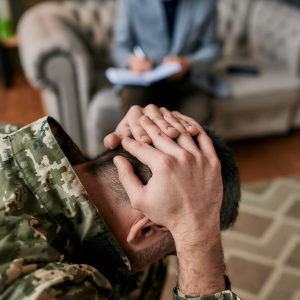If the incoming Biden administration wants to tamp down the troubling rise in military and veteran suicides, it needs a much greater focus on reaching those who may be perilously disconnected from others and who don’t avail themselves of state or federal services.
Sen. Mark Warner, D-Va., shines a light on a telling statistic. “What we found is that two-thirds of these veterans who take their own lives have had no contact with the VA,” he said.
As co-chairmen of an effort known as Warrior Call, our sole mission is to find ways of connecting with those men and women and to help steer them to resources and wellness before they despair and especially as COVID isolation grinds on.
We have traveled to numerous military facilities, speaking with service members, speaking with veterans — and what we have found is that there is no better person to make that connection than a former battle buddy. That’s why we are calling on active-duty service people and veterans to connect with former battle buddies and share a sense of responsibility for those with whom they have served.
All they need to do is pick up the phone and have an honest conversation. In the military we do a SITREP, a situation report, that could steer someone on the brink away from the abyss and to medical or mental health resources. Our goal is to have at least 50,000 current service members and vets pick up the phone, make a Warrior Call and connect with another by the end of the year.
Time is of the essence to make these connections. Invisible wounds linked to an underlying and undiagnosed traumatic brain injury can mirror many mental health conditions. At the same time, vets can be burdened with moral injury from their experiences. The traumas can affect and erode a person’s sense of hope, leading them to disconnect from friends and family and cause some to see suicide as the only way out.
The data surrounding military suicide certainly underscores the urgency. The rate of suicide among veterans ticked upward in recent years despite increased public attention and funding on the problem, according to a new report released by the Department of Veterans Affairs. After adjusting for sex and age, veterans’ suicide was 27.5 per 100,000 individuals in 2018, up from 25.8 per 100,000 in 2016. By comparison, among all U.S. adults, the suicide rate per 100,000 was 18.3.
In a sobering metric, more U.S. vets have died by suicide in the last 10 years than service members who died from combat in Vietnam. At the same time in the active duty force, the Army has seen a 30 percent increase in 2020 in deaths by suicide, from 88 deaths by suicide in 2019 to 114 this year, the Associated Press has reported.
The new administration and members of Congress can help in the Warrior Call effort. They can share the Warrior Call pledge on social media channels and in constituent newsletters. They can address this issue in relevant committees and during floor time. They can encourage constituents to take the pledge and participate in Warrior Call. They can prioritize those Veterans Affairs programs that help reach the silently suffering. They can make Warrior Call a national day, recognized by Congress and commemorated across America as a tool for suicide prevention.
The holiday season, coupled with the public health crisis posed by the coronavirus, creates a toxic brew of isolation for many Americans. This is especially true for our bravest men and women who are wearing or have worn the uniform to protect and serve the United States.
But amid the darkness for those who are suffering, a phone call from a warrior to another could save a life.

